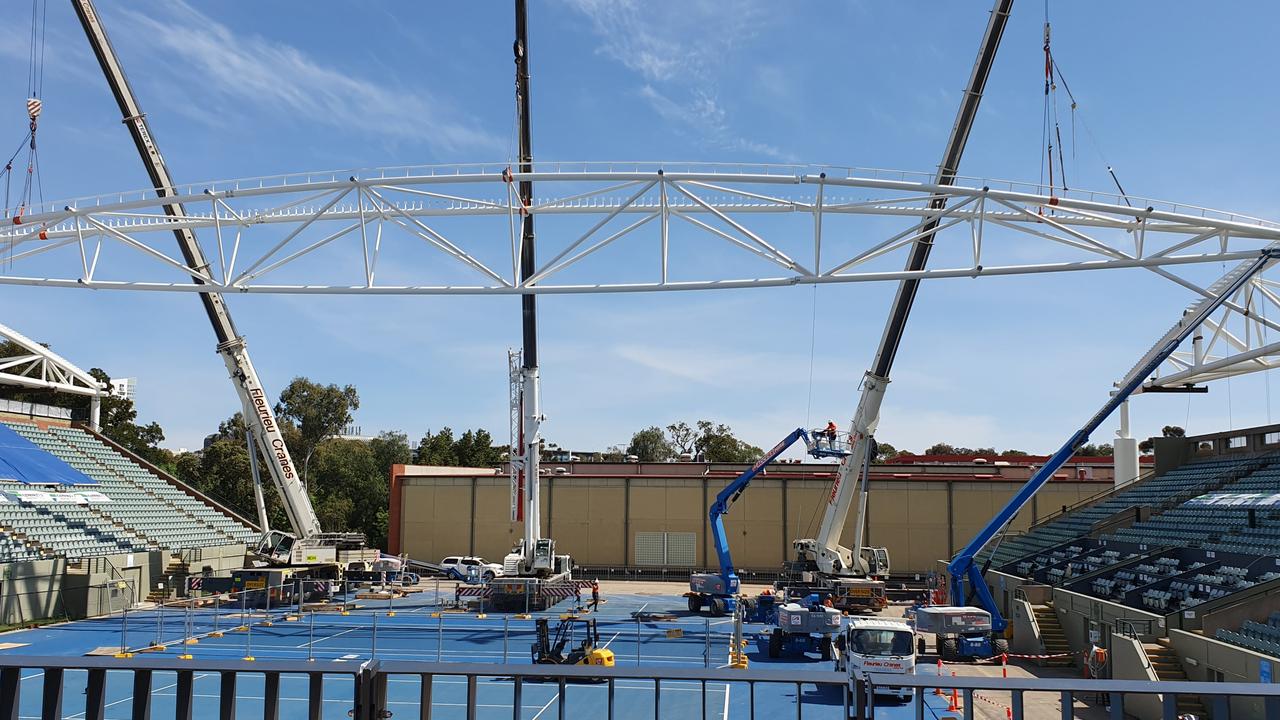Fracking: A scientist explains how it works and how it affects you
THE use of hydraulic fracturing — or “fracking” — to enhance the flow of natural gas from underground rock reservoirs, has been fiercely debated. So what is fracking and how might it affect you?

FRACKING is a fighting word in Australia and overseas. From oilfields in the US, to farms across Australia, fracking is one of the most contentious, controversial and publicly debated matters of our time.
The use of hydraulic fracturing — or “fracking” — to enhance the flow of natural gas from underground rock reservoirs, has been fiercely debated. So what is fracking and how might it affect you?
Public interest and concern continues to run high, not just in Australia. In March 2015, the New York Department of Health recommended a ban on hydraulic fracturing because of unknown risks to environmental and public health. Numerous US cities and local governments, such as Maryland, have banned it. Germany, France, Scotland, Wales and Luxembourg have bans or moratoria on its use. The US Physicians for Social Responsibility have called for a complete moratorium on its use until environmental authorities can guarantee human safety.
A new report by the CHEM trust, a British charity that investigates the potential impact of chemicals on humans and the environment, has concluded that fracking poses a “significant” risk to human health and the environment. Emphasising serious deficiencies in the UK’s regulatory system, they called for a EU-wide moratorium on fracking until regulatory reform occurs.

What is happening in South Australia?
Hydraulic fracturing has been used in South Australia since 1969 in the Cooper Basin to enhance the recovery of gas and oil. To date, there are no known impacts on aquifers. Over several decades, the SA government has built up substantial knowledge and experience in regulating and managing hydraulic fracturing. Recently, there has been interest in using fracking for gas supplies in unconventional rock reservoirs in the South-East of the state. Scientific studies are now underway to better understand the nature of the gas resource as well as potential environmental impacts.
SA has a comprehensive regulatory and approvals process that is part of the Petroleum and Geothermal Energy Act 2000. The Act is plain and unequivocal: it requires all environmental, social, economic, safety and health and wellbeing matters to be comprehensively identified and completely addressed through Environmental Impact Reports that involve community consultation and engagement. It requires approved Statements of Environmental Objectives for each project.
What is fracking?
Fracking is a technique for fracturing or cracking underground rock using a pressurised fluid, to extract oil or gas. This fracking fluid is mostly water but also contains sand or ceramic grains suspended with gelling or foaming agents. To break up the rock involves injecting the fluid under high pressure down an oil or gas well. The cracks created in the rock body allow gas (or oil) to flow more freely to the producing well, making it easier and cheaper to extract them.
Once the pressure is removed, the small grains of sand used in the fracking fluid help prop the fractures open. The fractures generated typically range in length from tens of metres to hundreds of metres. Fracking has been used since 1947 across all areas of oil and gas production. To date, the technology has been used in around 2.5 million wells worldwide.
What’s in the fluid?
Fluids used for gas fracking are usually about 90 per cent water, 9.5 per cent material such as sand, and 0.5 per cent other chemicals. These chemicals aid the fracking process in several ways — reducing friction and distributing the sand, preventing bacterial growth (which can gum up the cracks in the rock), inhibiting scale and corrosion in the casing and cleaning. Until recently, the exact chemical composition was a commercial secret but voluntary disclosures by companies and new laws in countries like the US have made it more public. More environmentally friendly chemicals are also being developed.
Community concerns about possible effects on the environment, human health and land values have led to calls for greater transparency and baseline monitoring. People are still worried about whether the hundreds of chemicals used have been properly tested for health and safety. How risky fracking is in a given situation depends not only on the chemicals used but also on local conditions of geology and groundwater, as no two wells are the same.
What is the overseas experience?
The US has employed fracking for oil and gas production for over 70 years especially, in more recent times, for “unconventional” oil and gas extracted from shale beds and coal seams. Over this time, it has been used in more than a million wells, mostly at depths of between 1200m and 4200m.
The main risk to the environment, particularly to underground water resources, is from fracking chemicals escaping via fracture zones or faults in wells into groundwater for human or animal use. However, government studies of the scientific data have found little or no evidence of groundwater contamination from actual fracking at normal depths, typically below 900 metres.
A 2015 assessment by the US EPA titled “Assessment of the Potential Impacts of Hydraulic Fracturing for Oil and Gas on Drinking Water Resources” is a draft assessment that is undergoing public consultation and expert peer review. The report found that hydraulic fracturing can impact drinking water resources. This can happen in a number of ways — spills of fracking fluids or water produced from a well, fracking into underground drinking water resources, migration of liquids and gases in groundwater and inadequate treatment and discharge of wastewater. The report did not find evidence of any widespread or systematic impacts on drinking water resource in the US. However, it did find identified cases where there were impacts on drinking water resources. The incidence rate was found to be small compared to the large number of fracked wells.
Is fracking really necessary?
Oil and gas drillers have found that fracking is sometimes essential to improve rates of gas flow for economic gas production from coal seams, shale and “tight” sands. An Australian report by the Independent Expert Scientific Committee on Coal Seam Gas and Large Coal Mining Development notes that “of the 1844 coal seam gas wells drilled in Australia … (during) 2012-13, six per cent were hydraulically fractured”.
Where to from here?
The National Centre for Groundwater Research and Training at Flinders University is undertaking a new project for the SA Government to provide the first global assessment of the full range of potential impacts from unconventional gas production, including hydraulic fracturing. It will bring all the best available international science together in a single place for the first time. Most importantly, from the community’s point of view it will seek to inform public discussion by bringing together quantitative scientific evidence to ensure that SA’s policy and regulation of this area are the best in the world.


